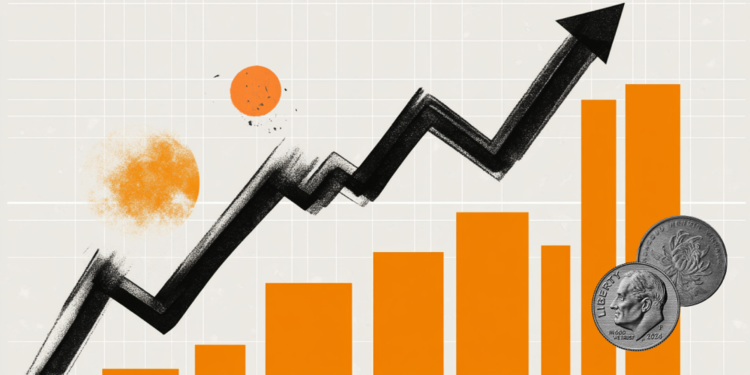Each year, around 8 million tons of plastic end up in the ocean. The equivalent of a garbage truck of this product thrown into the sea every minute, according to the United Nations Environment Program (UNEP).
One study carried out at the Federal University of São Paulo (Unifesp) reveals that the Santos estuary, on the coast of São Paulo, is one of the most contaminated places by microplastics in the world today. In the research, three areas were evaluated: the region of the Santos-Guarujá ferry, the beach of Góes and the island of Palmas.
To reach this conclusion, the researchers compared international data, previously published in more than one hundred studies from 40 countries, with samples of oysters and mussels collected in these three regions during the month of July 2021. The point at which the highest level of contamination was the raft area. In this stretch, the evaluated animals had the worst nutritional and health status, with an average that varied between 12 and 16 plastic particles per gram of tissue.
“In one of the mussels, we found more than 300 microplastics per gram. It is important to highlight that the Góes collection point was a traditional fishing community until very recently. Today, about 300 people live there, a beach that is a bit remote and can only be reached by boat or by a trail. Very likely, [essas pessoas] consume these animals in their diet, bearing in mind that this rocky wall is easily accessible to fishermen”, points out Victor Vasques Ribeiro, doctoral candidate at the Instituto do Mar (IMar-Unifesp).
The study published in the journal Science of the Total Environment was conducted during Ribeiro’s master’s degree, with support from the State of São Paulo Research Support Foundation (FAPESP).
As the authors explain, an estuary is an aquatic environment of transition between a river and the sea, which ends up suffering the influence of the tides and presents areas of great variability that range from fresh waters, in the headwaters, to more brackish waters, until reaching marine waters, close to its mouth. These environments maintain one of the most important ecosystems in the country, the mangroves, which serve as shelter and nursery for a large number of animals.
waste discharge
The Santos estuary, located in the metropolitan region of Baixada Santista, is home to the largest port in Latin America and is under the direct influence of industrial and domestic waste discharges from surrounding municipalities.
“From my perspective, no surprises”, says Unifesp professor Ítalo Braga de Castro about the results disclosed in the article.
“Since I was already studying other contaminants, I saw that this region also held the record for contamination with other dangerous chemical substances. Here, we have the busiest port in Latin America and one of the largest urban centers in Brazil. Santos is a populous city: considering the entire Baixada Santista, we have something around 1 million inhabitants. All this contributes to the estuary being the target of the release of several dangerous chemical substances and waste, which come from domestic and industrial activities, in addition to the transport of plastic materials at sea”, he adds.
The differential of this research, according to Castro, was to show that both oysters and mussels function as contamination sentinels. The conclusion is based on experiments carried out with two species: the Crassostrea brasilianapopularly known as stone oyster, and Perna perna, or brown mussel.
“Based on this, we can expand the research, using the two organisms to measure, historically, the changes that have occurred in our territory”, highlights the professor.
Now, during Ribeiro’s doctorate, the group intends, with support from FAPESP, to extend the analysis to the estuaries of Ceará, Pernambuco, Espírito Santo, Rio de Janeiro, São Paulo, Santa Catarina and Rio Grande do Sul.
bivalve animals
As oysters and mussels filter the water to feed themselves, the researchers thought it would be interesting to investigate whether these animals could be used as a kind of tool to help measure microplastic contamination in other parts of the country as well, thus helping to monitor contamination in coastal areas.
“These are species that do not move, they live their whole lives attached to a rocky shore, to the hard surface of a bridge or a pier. So, they are extremely exposed to contamination in these places and, as they feed by filtration, they end up retaining the particles in their tissues”, explains Castro to Agência FAPESP.
During the study, length, width, height and weight of shells and tissues were measured. The state of nutrition and health of these organisms were also analyzed. “To analyze the microplastics, we chemically digest the tissues using a potassium hydroxide solution, taking the necessary precautions to avoid cross-contamination in the laboratory environment”, details the researcher.
The next step now, according to the Unifesp professor, will be to understand when this problem of shellfish contamination started, both in Santos and in other coastal cities, and how it evolved over time, as industries were settling in the region. For this, animals stored in zoological collections will be analyzed.
“Through a collaboration with the Zoology Museum of the University of São Paulo (USP), we will analyze samples collected and preserved in Brazil since the 1920s. This approach will allow us to historically reconstruct the events that influenced the increase in contamination”, he adds. Castro.
Public policy
For the research advisor, it is important to highlight that contamination is different from pollution. “We only talk about pollution when there is damage. The study did not assess damage, only occurrence. People use them as synonyms, but the terms have different meanings”, explains Castro.
One of the findings that called the attention of the researchers was the number of colorless fibers of size between 10 and 1,000 μm (micrometers) found in the analysis of oysters and mussels, in addition to cellulose and acrylic compounds, probably coming from the pollution of the estuary by the release domestic sewage containing laundry waste.
“Textile fibers have been identified as the most common type of microplastic found in areas with high rates of urban occupation”, he observes.
The professor explains that every time a ship transports raw material for the production of plastics, it lets small pieces escape.
“These are plastic balls, called pellets, that come in containers. During loading and unloading operations, many of these pellets end up escaping into the environment, contaminating the region’s estuary and beaches with this material. However, the microplastics found in molluscs did not originate from the pellets, but from textile fibers”, he points out.
The likely source, according to him, is domestic laundry. “Today, most of our clothing is synthetic, therefore plastic. When you wash them, many of these fibers come loose and fall into the sewer system, where the residue is released. As there is no treatment at the stations to remove these particles, they end up contaminating the environment”, emphasizes Castro.
Therefore, according to the research group, in addition to providing the basis for future studies, the objective of this survey was also to gather data to help guide new public policies for basic sanitation throughout Brazil, considering that, currently, the legislation does not require the removal of microplastics from effluents.
For now, what we have is Law No. 7661, of May 16, 1988, which establishes rules for the National Coastal Management Plan, in addition to the Federal Constitution, which also protects the environment. “It is not illegal, although it is absurd, as it has an impact on the health of the estuary, on organisms and, ultimately, on people’s health”, concludes the scientist.
protected areas
In recent years, the Unifesp group has dedicated itself to several studies on the subject, evaluating, for example, contamination by microplastics inside protected marine areas.
“We want to understand whether these areas, dedicated to biodiversity conservation, are under threat of contamination. We have two doctoral students in the laboratory dedicated to this topic. Yonara Garcia Borges Felipe will focus on protected areas in the State of São Paulo, in collaboration with USP professor Alexander Turra and Maria Teresa Castilho Mansor, from Fundação Florestal. The study by doctoral student Beatriz Zachello Nunes is evaluating the problem of microplastics on global and national scales, with the support of Australian environmental institutions”, informs Castro.
Source: CNN Brasil
I’m James Harper, a highly experienced and accomplished news writer for World Stock Market. I have been writing in the Politics section of the website for over five years, providing readers with up-to-date and insightful information about current events in politics. My work is widely read and respected by many industry professionals as well as laymen.







